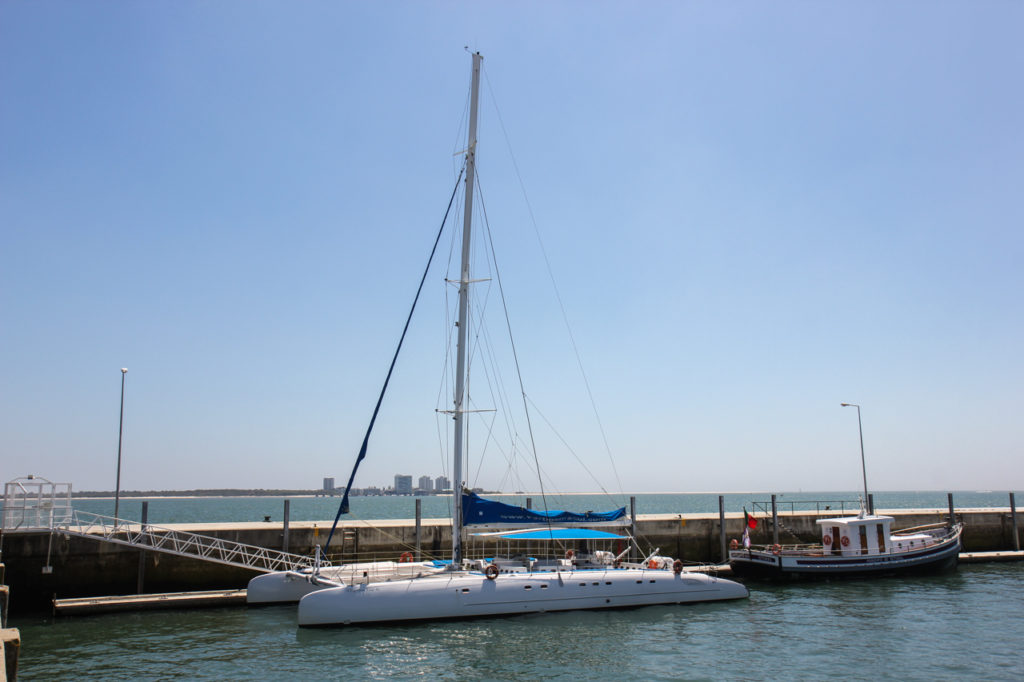Did you know that Lisbon also offers excellent opportunities for birdwatching and even dolphin watching? A 45-minute drive from the center of Lisbon takes you to the Setúbal Peninsula. The vibrant port of Setúbal is the place to be if you’d like to escape the burning sun and go on a breezy cruise to spot bottlenose dolphins in the Sado estuary. This broad, shallow estuary south of Lisbon is of international significance for its breeding and wintering waterbirds. Get on board of the O Esperança catamaran and enjoy a fun half-day trip to watch frisky dolphins and flamingos during the winter months.


Looking south from the heights of the Serra da Arrábida, the silver and blue tapestry of the Sado estuary lies glistening in the sun, its mudflats and sandbanks almost completely exposed at low tide, with the aquamarine current of the river Sado itself surging through the narrow gap between the Tróia peninsula and the fishing port of Setúbal. The shallow alluvial basin which forms the heart of estuary is by no means untouched by man, but even so is one of the best birdwatching sites in Portugal. The catamaran takes you on a tour around the Sado estuary, Tróia and the Arrábida coast. You’ll see, from the ocean, the Arrábida Convent discover some other important historical sites and enjoy the beautiful coastline before sailing back to the old city center of Setúbal. You’ll have a 95% chance of spotting dolphins on the trip!
The bottlenose dolphin is a marine mammal belonging to the cetacean order, which includes approximately 80 different species of whales, dolphins, and porpoises. With the exception of the Polar Regions, bottlenose dolphins can be found all over the world. They live in cold, temperate and tropical waters, and can just as easily be found in bays, coastal waters as in the open ocean. At the moment seven females and five males dolphins are living in the Sado estuary of which 5 are calves, 4 juveniles, and 8 adult dolphins. They are considered calves up to the moment they separate from their mothers and enter the more independent juvenile stage. As of the age of 8 or 10, they reach reproductive maturity and are considered adults. A dolphin can become about 45 years old.
[edgtf_highlight background_color=”#D8D8D8″ color=”#FFFFFF”]Practical:[/edgtf_highlight]
Vertigem Azul – Dolphin Watching
Rua Praia da Saude 11, Setúbal, Portugal
Office: Monday – Sunday from 8 AM – 7 PM
Phone: + 351 265 238 000
Season: All year
Time: +/- 3 hours
Price: € 35 for adults, € 20 for children
Departure and schedule: 9.30AM / 2.30PM / 6.00PM
www.vertigemazul.com





























